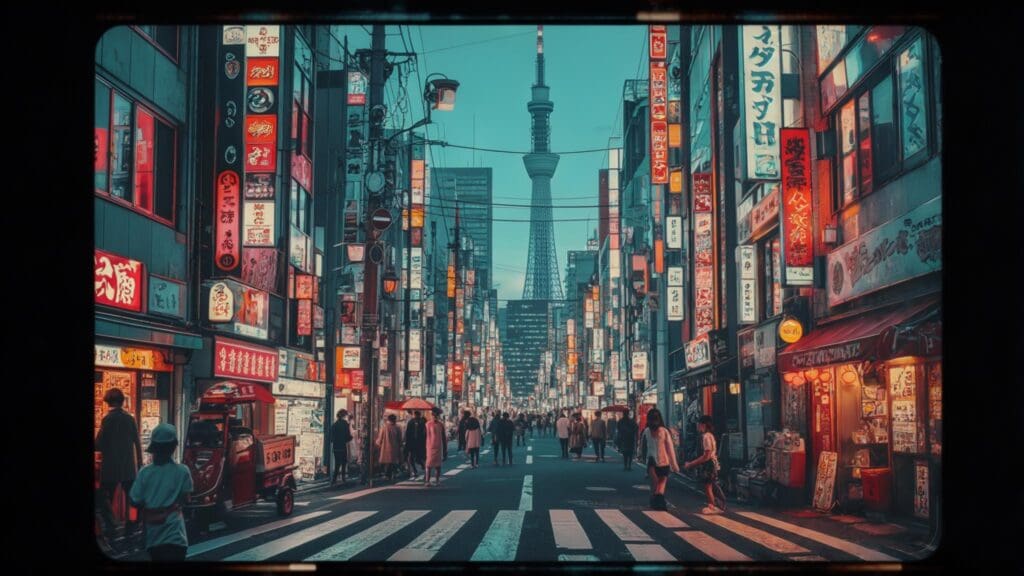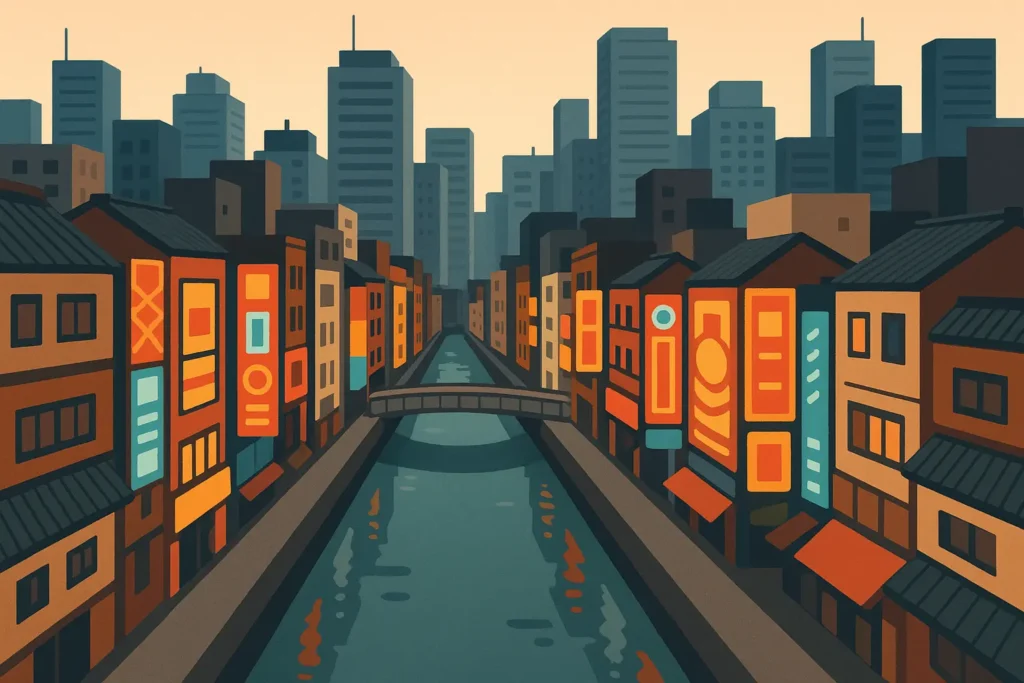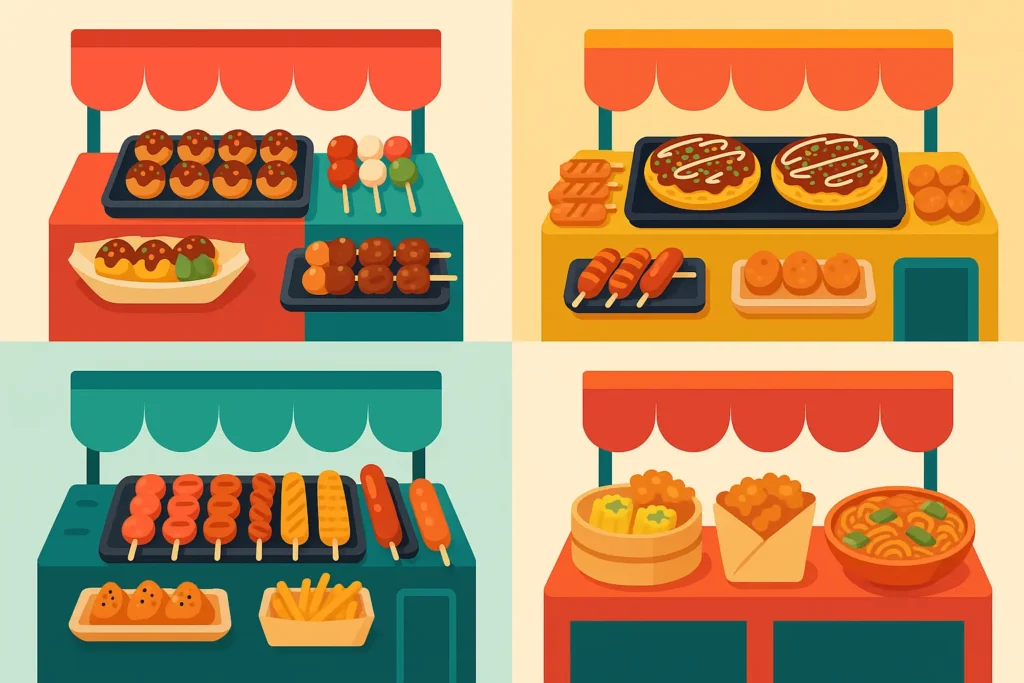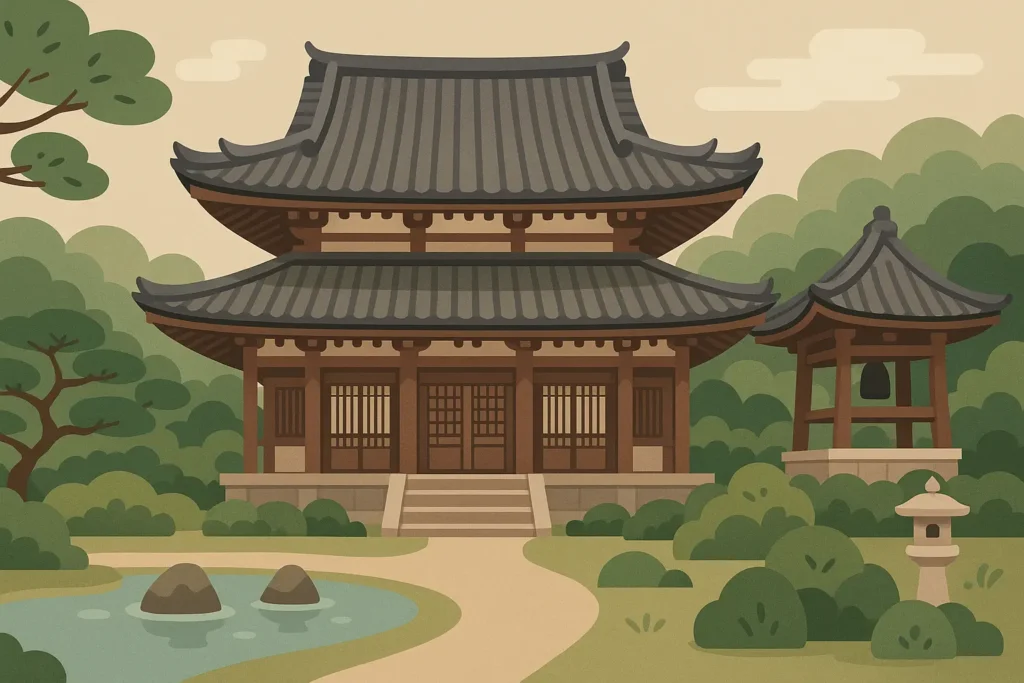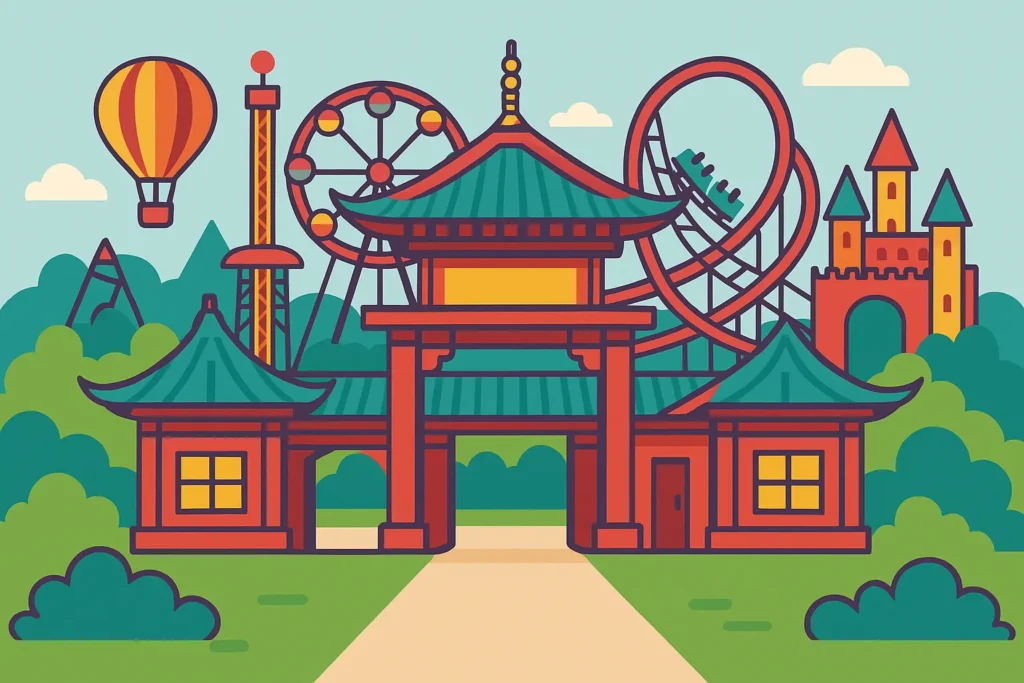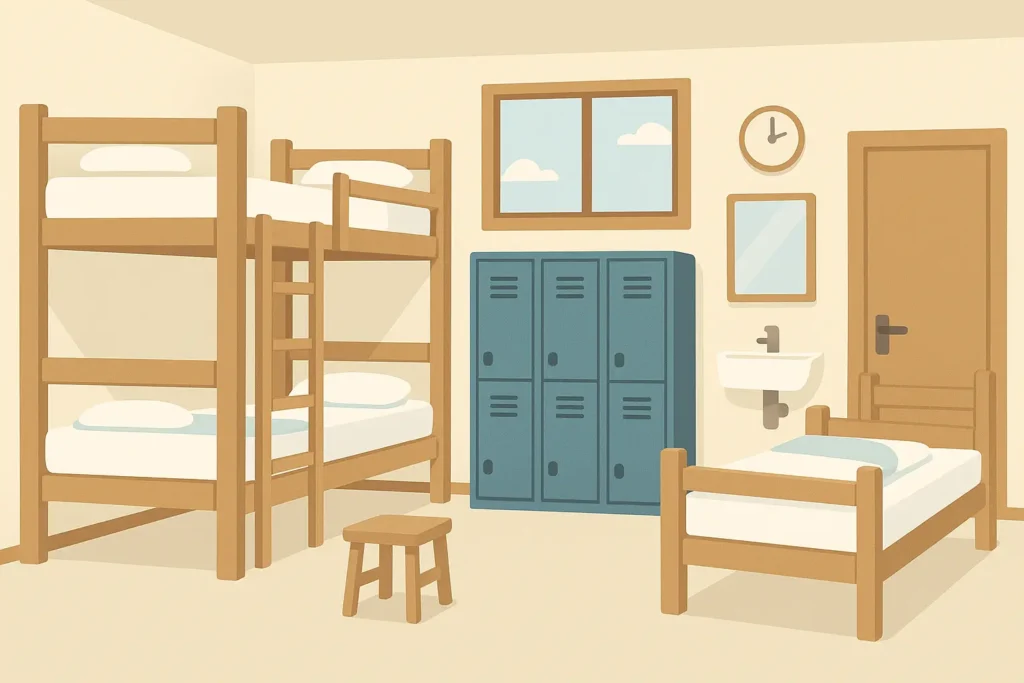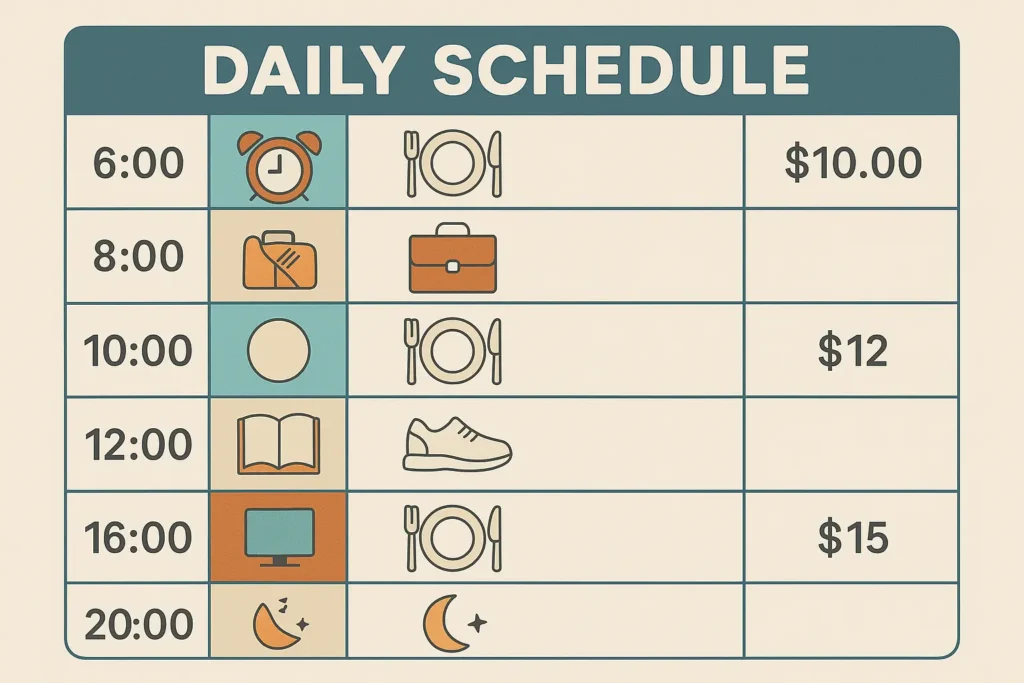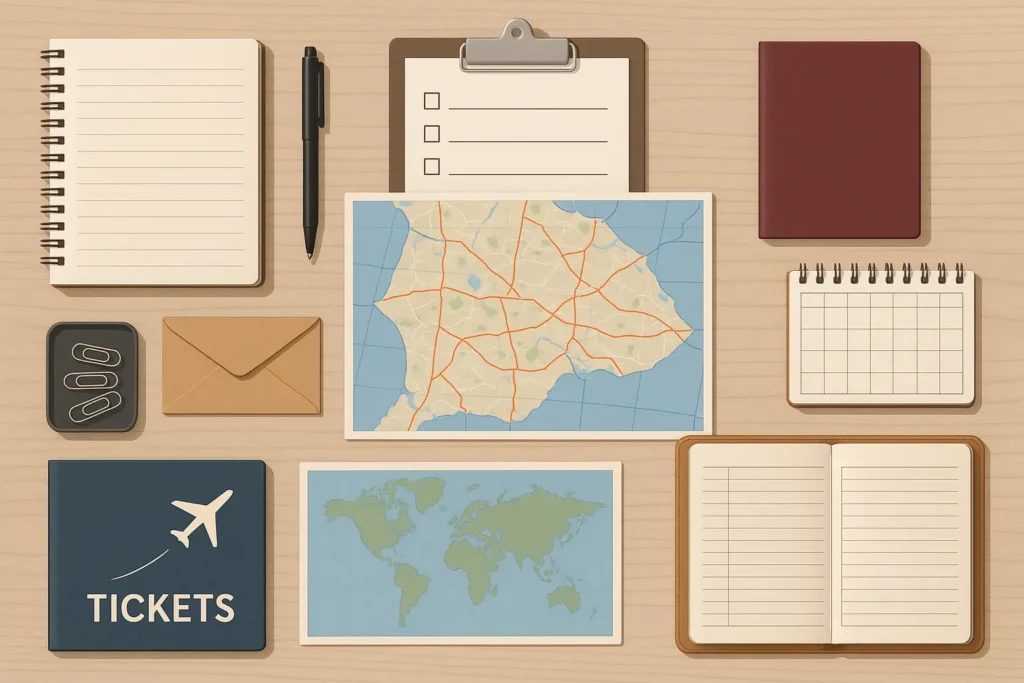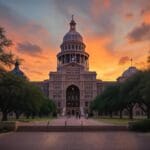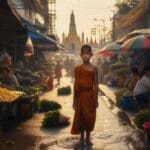When I first started planning my trip to Osaka, I kept reading about how it’s Japan’s second most popular destination with over 15 million international visitors annually. But honestly? Standing in a crowd of tourists all taking the same photo in Dotonbori made me realize I wanted something different.
My first visit to Osaka taught me that the difference between a good trip and an unforgettable one lies entirely in your osaka itinerary choice. That Tuesday afternoon at 2 PM, surrounded by tour groups taking identical photos, I realized I needed a completely different approach. That’s when I started digging deeper into this incredible city – and discovered there are actually 25 distinct osaka itinerary styles that can transform your adventure from ordinary to extraordinary.
Create a travel plan you’ll actually enjoy with our free Vacation Planner
Quick Resources:
-
Plan your trip with our Vacation Planner
-
For romantic trips, explore our Honeymoon Planner
-
Celebrating in Osaka? Use our free Bachelorette Party Tools
-
View all our Wedding & Celebration Tools
Look, I’ll be honest – my first day in Osaka was a disaster. I tried to hit five neighborhoods, spent ¥8,000 on a lunch that wasn’t even that good, and ended up so exhausted I fell asleep at 7 PM and missed the famous Dotonbori nightlife entirely.
TL;DR
- Short trips (1-2 days): Stick to the hits – castle, street food, neon signs
- Longer stays (3+ days): Now we’re talking – you can actually slow down and discover stuff
- Food adventures range from ¥3,000 street crawls to ¥50,000+ fancy dinners (both are worth it for different reasons)
- Want to feel like less of a tourist? Skip the attraction checklist and just pick one neighborhood to really explore
- Budget options under ¥3,000/day are totally possible if you’re smart about it
- Solo female travel? You’re going to love it – Japan is ridiculously safe
- Got mobility needs? Most modern stuff is accessible, but traditional sites can be tricky
What Actually Makes an Osaka Itinerary Work
Here’s what I wish someone had told me before I went: How long you’re staying changes everything. Are you the type who gets hangry when you spend too much on lunch? Do you actually enjoy temples, or are you just going because guidebooks say you should?
Successful osaka travel itinerary planning comes down to four things: being honest about your time and energy, knowing what you can actually afford, figuring out what you’re genuinely interested in, and dealing with practical stuff like where you’re staying and how comfortable you are with language barriers.
Duration & Energy – Let’s Get Real
Your trip length shapes every other decision you’ll make. I’ve seen too many people try to cram seven days of experiences into two days of actual time. Don’t be that person.
Trip Length Reality Check: Single-day visits work best when you have a specific goal – maybe you’re obsessed with trying authentic takoyaki, or you want to photograph those neon signs. Multi-day trips let you actually breathe and discover things. Week-long stays? That’s when you can hit up Kyoto, Nara, and Kobe too. The best osaka itinerary always matches your actual available time, not your wishful thinking.
| Trip Duration | What You Can Actually Do | Daily Budget Reality | How Deep You’ll Go |
|---|---|---|---|
| 6-12 hours | Castle, market, neon photos | ¥3,000-5,000 | Instagram highlights |
| 1-2 days | Main attractions, street food | ¥5,000-12,000 | Tourist introduction |
| 3-7 days | Neighborhoods, day trips, workshops | ¥8,000-20,000 | Getting somewhere |
| 1+ weeks | Actually living there | ¥10,000-25,000+ | Local status |
Seasonal Real Talk: Cherry blossom season (March-April) is magical but absolutely packed with crowds and higher prices everywhere. Summer festivals are incredible but holy heat, Batman. Winter illuminations are gorgeous with way fewer people.
Energy Reality Check: Jet lag hits harder than you think. Your first day in Osaka probably isn’t the best time for a 12-hour walking marathon through five different districts. Trust me on this one.
Budget – Let’s Talk Money
Here’s where I messed up my first time: I thought ¥5,000 a day sounded reasonable until I realized that fancy hotel in the middle of everything cost ¥8,000 just for one night. Whoops. Ended up in a hostel and honestly? Best decision ever – met way cooler people.
Osaka has experiences at every price point, but you need to be real about what you can afford. Street food adventures can cost under ¥3,000 per day, while Michelin-starred dining easily hits ¥30,000 per meal.
Where You Stay Matters: Staying near Namba Station puts you in the heart of everything but costs more. Residential neighborhoods offer authentic experiences and lower prices but require more train time.
Food Budget Reality: You can eat incredibly well for ¥2,000-4,000 daily with street food and local spots. Fine dining ranges from ¥8,000-50,000+ per meal depending on how fancy you want to get.
Activity Cost Truth: Temple visits are usually free or under ¥500, while theme parks cost ¥8,000+ per person. Cultural workshops range from ¥3,000-15,000 depending on what you’re doing.
Personal Interest Alignment – Know Yourself
Food Focus Reality: Some people want every meal to be a cultural education experience, while others just want something familiar between adventure meals. Both are totally fine, but your itinerary should reflect what you actually want.
Cultural Depth Check: Do you want to understand the historical significance of every temple, or are you more interested in cool photos? Both approaches work, but they need different time and prep.
Group Dynamics: Solo travelers have complete flexibility but might miss social stuff. Couples need to balance different interests. Families need kid-friendly activities and frequent breaks. Friend groups work best with actual plans so nobody stands around going “I don’t know, what do you want to do?”
Planning a group celebration? Use our Bachelorette Party Tools to keep it organized and fun
Practical Stuff You Actually Need to Think About
Base Location Strategy: Staying in Osaka versus day-tripping from Tokyo or Kyoto completely changes your experience. Osaka-based stays let you be spontaneous and hit up late-night food spots. Day trips work better for specific goals.
Language Comfort Check: How much English support do you need? Tourist areas have more English menus and signs, while authentic neighborhood spots often require translation apps or basic Japanese phrases.
Technology Dependencies: You’ll need reliable WiFi for navigation, translation, and finding restaurants. Get a portable WiFi device or international phone plan instead of hoping for free WiFi everywhere.
25 Osaka Itineraries That Actually Make Sense
I’ve organized these 25 itineraries into six categories that address different travel motivations and constraints. Duration-based options range from 6-hour express tours to month-long cultural immersions. Food-focused journeys span street food crawls to Michelin star experiences. Cultural itineraries emphasize traditional arts and spiritual sites. Modern options highlight entertainment and technology. Neighborhood-specific plans dive deep into local areas. Special interest itineraries address unique needs including solo female travel and accessibility requirements.
Duration-Based Adventures (5 Itineraries)
1. Lightning Osaka: 6-Hour Express Tour
Perfect for cruise passengers or travelers with connecting flights, this express tour hits the absolute essentials without making you feel like you’re running a marathon.
You’ll hit Osaka Castle (skip the museum interior if time runs short – the exterior and grounds are what you came for), grab lunch at Kuromon Market (have cash ready), see the iconic Dotonbori neon signs, and maybe squeeze in some shopping in Shinsaibashi.
Reality Check: Start early (8 AM) to avoid crowds. Pre-download offline maps. Total walking stays under 4 kilometers, costs under ¥5,000 including transportation and food.
This osaka travel itinerary works for people with serious time constraints who want maximum impact from minimal hours.
2. Classic Osaka Two Day Itinerary
The most popular choice for first-timers, and for good reason. Two days gives you enough time to see both traditional and modern Osaka without feeling rushed.
Day one covers your cultural foundation – Osaka Castle, Sumiyoshi Taisha Shrine, market experiences. Day two shifts to modern Osaka – shopping districts, contemporary architecture, nightlife. This osaka two day itinerary hits the sweet spot for most first-time visitors.
Day 1 Traditional Stuff: Morning castle visit (fewer crowds), Kuromon Market lunch (English-friendly vendors), Sumiyoshi Taisha (peaceful spiritual vibes), evening Dotonbori exploration (those neon lights hit different at night).
Day 2 Modern Experience: Shinsaibashi shopping, authentic takoyaki experiences, Tsutenkaku Tower and retro Shinsekai district, Umeda Sky Building for sunset views.
3. Extended Weekend: 3-Day Deep Dive
Three days is the sweet spot for thorough exploration without burning out. Each day has a theme, but you can revisit favorite spots and follow your nose when something interesting pops up.
Day 1: Historical foundations with extended castle time and multiple shrine visits
Day 2: Food culture immersion with market tours, cooking classes, and restaurant hopping
Day 3: Modern Osaka with architecture tours, shopping, and nightlife
4. Week-Long Osaka Explorer
Using Osaka as your base for Kansai region exploration. Seven days transforms your visit from tourism to temporary residency – you’ll develop favorite local restaurants and understand neighborhood rhythms.
Days 1-2: Core Osaka attractions with time to actually enjoy them
Day 3: Kyoto day trip for temples and traditional districts
Day 4: Nara day trip for deer park and ancient temples
Day 5: Kobe day trip for beef experiences and harbor views
Days 6-7: Local neighborhood exploration and revisiting favorites
The JR Pass becomes cost-effective for multiple day trips, and you’ll have time for seasonal activities and local events.
5. Month-Long Local Living Experience
This isn’t tourism anymore – it’s cultural immersion. Monthly apartment rentals, neighborhood integration, language exchange, and local community involvement create authentic living experiences.
Week 1: Tourist essentials and city orientation
Week 2: Neighborhood integration through regular spots and community events
Week 3: Regional exploration with local knowledge
Week 4: Deep cultural activities like volunteer work and local friendships
Monthly apartment rentals (¥150,000-250,000) provide authentic living experiences. Local gym memberships and community activities create real social connections.
Food-Focused Journeys (5 Itineraries)
For couples planning a romantic food adventure, consider how these culinary experiences can enhance your honeymoon destinations or create memorable moments for your bachelorette party planning.
6. Street Food Crawl Adventure
Okay, let’s talk about why you’re really here – the food. Osaka folks are obsessed with eating, and after three days of the best meals of my life, I get it. This crawl hits the most authentic and affordable way to experience the city’s food culture.
Street food crawling lets you eat where locals eat, learn preparation techniques, and understand the social aspects of Japanese food culture. This is one of the most essential things to do in osaka for food enthusiasts.
Capture the essence of your food adventure with help from our Vacation Planner
Morning Market Foundation: Kuromon Market for fresh sushi, wagyu beef skewers, and seasonal fruit. Many vendors speak basic English and love curious tourists. Budget ¥1,500-2,500.
Afternoon District Hopping: Dotonbori for iconic takoyaki, okonomiyaki, and taiyaki. Multiple vendors let you compare and figure out your preferences.
Evening Local Discoveries: Shinsekai kushikatsu spots showcase local drinking culture. Tsuruhashi Korean BBQ represents Osaka’s multicultural food scene.
7. Michelin Star Osaka Experience
This high-end culinary journey explores acclaimed restaurants that combine traditional techniques with innovative approaches. Reservations need advance planning, but the cultural education and artistry justify the investment.
Lunch Spots: Mizuno offers Michelin-recognized okonomiyaki in a casual setting. Traditional techniques show the artistry in seemingly simple dishes. Still reasonable at ¥2,000-3,000 despite Michelin recognition.
Dinner Destinations: Koryu provides three-star kaiseki experiences (¥30,000+ per person) showcasing seasonal ingredients. Fuj
For food-focused honeymoons, explore our Honeymoon Planner
Wine and Sake Integration: Professional pairings enhance your understanding of Japanese beverage culture. Total experiences range ¥50,000-80,000 per person including drinks.
8. Cooking Class & Market Tour Combo
This hands-on approach combines guided market tours with professional cooking instruction. You’ll get take-home skills alongside cultural understanding, and local chefs share family traditions that transform cooking from instruction to cultural exchange.
Market Education: Chefs guide ingredient selection while explaining seasonal considerations and quality indicators. Vendor relationships provide authentic market experiences.
Hands-On Instruction: Ramen, gyoza, and mochi preparation techniques you can actually use at home. Small classes ensure individual attention.
Take-Home Value: Recipe cards, ingredient sourcing info, and chef stories add personal connections you’ll remember long after the trip.
9. Sake & Whisky Tasting Trail
Japanese beverage culture extends beyond just drinking to craftsmanship, tradition, and social customs. This trail provides comprehensive education while maintaining responsible drinking practices.
Sake Education: Brewery tours show traditional production methods. Tasting sessions teach proper techniques and flavor identification. Cultural context explains sake’s role in Japanese ceremonies.
Whisky Innovation: Japanese distilleries showcase adaptation of Scottish techniques to local ingredients and climate. Master distiller insights provide industry perspective.
Bar Culture: Specialized bars demonstrate proper serving techniques and food pairings. Social aspects reveal Japanese hospitality traditions.
10. Vegetarian/Vegan Osaka Discovery
Plant-based dining in Osaka challenges assumptions about Japanese cuisine being entirely fish and meat-focused. Buddhist traditions and modern health consciousness create more options than most travelers expect.
Buddhist Temple Cuisine: Shojin ryori restaurants offer elaborate multi-course plant-based meals rooted in Buddhist philosophy. Cultural education alongside exceptional dining. ¥3,000-8,000.
Modern Vegan Innovation: Contemporary restaurants adapt traditional Japanese flavors to plant-based ingredients. Vegan ramen, plant-based sushi, dairy-free desserts show culinary creativity.
Vegan Navigation Success: Marcus, a strict vegan, worried about finding suitable food in Osaka. Using the HappyCow app and learning key phrases like “niku nashi” (no meat) and “sakana nashi” (no fish), he discovered Ain Soph restaurant’s incredible vegan kaiseki and multiple Buddhist temple restaurants. His preparation transformed potential restrictions into unique cultural experiences.
Cultural & Traditional Experiences (4 Itineraries)
11. Temple & Shrine Spiritual Journey
Look, I’m not particularly religious, but there’s something about these temples that just hits different. Maybe it’s the quiet after all that city noise, or watching people actually pray instead of just taking selfies. Either way, don’t skip them.
Spiritual sites in Osaka range from ancient foundations to modern interpretations, each reflecting different aspects of Japanese religious life. This journey provides understanding beyond tourist photography in japan osaka’s sacred spaces.
Ancient Foundations: Sumiyoshi Taisha represents some of Japan’s oldest Shinto architecture. The unique sumiyoshi-zukuri style predates Chinese influence. Four deities honored here include sea gods, reflecting maritime cultural importance.
Buddhist Diversity: Isshinji Temple showcases modern Buddhist architecture with its unique bone Buddha statue created from cremated remains. Shitennoji Temple, founded in 593 AD by Prince Shotoku, demonstrates Buddhism’s early introduction to Japan.
Hidden Spiritual Gems: Hozenji Temple, tucked within Dotonbori’s entertainment district, shows how spiritual practice integrates with daily life. Namba Yasaka Jinja’s dramatic lion head stage creates memorable visuals while maintaining authentic spiritual function.
Meditation and Practice: Many temples offer meditation sessions for visitors. Proper etiquette instruction helps you participate respectfully. Prayer experiences provide deeper cultural understanding.
12. Traditional Arts & Crafts Experience
Traditional arts workshops offer direct connection to Japanese cultural heritage through hands-on learning with master practitioners. These experiences provide lasting skills and deeper cultural appreciation.
Pottery and Ceramics: Traditional kiln workshops teach techniques passed down through generations. Master potters share cultural significance alongside technical instruction. Finished pieces can be shipped home after firing.
Textile and Clothing Arts: Kimono fitting experiences include proper wearing techniques and cultural significance. Traditional dyeing workshops demonstrate indigo and natural color processes.
Performance Arts Integration: Bunraku puppet theater workshops provide behind-the-scenes access to this UNESCO-recognized art form. Traditional music instruction includes shamisen and taiko drumming.
Calligraphy and Visual Arts: Master calligraphers teach brush techniques and character meaning. Cultural philosophy underlying artistic expression provides deeper understanding.
13. Historical Osaka Timeline Tour
Understanding Osaka’s historical development provides context for contemporary culture and urban layout. This timeline approach connects past and present through physical locations in the city of osaka.
Ancient Foundations: Archaeological sites and ancient shrine locations demonstrate pre-historic settlement patterns. Sumiyoshi Taisha’s founding legends connect to early maritime trade.
Medieval Development: Osaka Castle’s multiple construction phases reflect changing political power. Merchant district development shows economic evolution.
Modern Transformation: Meiji period industrialization sites show Japan’s modernization process. Post-war reconstruction areas demonstrate resilience and adaptation.
Cultural Continuity: Traditional festivals and practices that survived historical changes. Family businesses operating for multiple generations.
14. Festival & Seasonal Celebration Focus
Festival-focused visits provide authentic cultural immersion through community participation rather than tourist observation. Timing becomes crucial, but rewards include genuine local experiences.
Celebrate culture like a local—use our Vacation Planner
Spring Cherry Blossom Culture: Hanami parties in Osaka Castle Park demonstrate Japanese seasonal appreciation. Proper etiquette includes food sharing and respectful behavior.
Summer Festival Energy: Tenjin Matsuri, one of Japan’s three great festivals, showcases traditional processions and community involvement. Yukata (summer kimono) wearing adds cultural authenticity.
Autumn Seasonal Transitions: Momiji (autumn leaf) viewing provides quieter seasonal appreciation. Harvest festivals celebrate agricultural traditions.
Winter Illumination Magic: Light displays create romantic atmosphere. New Year preparations offer insight into Japan’s most important holiday.
Modern & Entertainment Options (4 Itineraries)
These modern entertainment experiences can inspire unique wedding planning themes or create memorable experiences for couples seeking unconventional celebrations.
15. Osaka Nightlife & Entertainment District Tour
Osaka’s nightlife offers incredible diversity from tourist-friendly entertainment to authentic local experiences. Understanding cultural norms and safety considerations enhances enjoyment while ensuring respectful participation.
Dotonbori Evening Foundation: Neon photography tours capture iconic imagery while learning district history. Street food sampling provides energy for extended evening activities.
Hidden Bar Discovery: Tiny bars tucked in narrow alleys provide authentic local atmosphere. Master bartenders create custom cocktails while sharing cultural insights. Proper bar etiquette includes respectful conversation.
Karaoke Culture Immersion: Private room experiences allow comfortable participation without performance pressure. Group dynamics and social aspects reveal important cultural elements.
Late-Night Food Adventures: Ramen shops and 24-hour establishments cater to night workers and entertainment seekers. Safety considerations for solo travelers, especially women.
16. Theme Park & Family Fun Adventure
Family travel in Osaka requires balancing adult interests with children’s needs while ensuring everyone enjoys authentic cultural experiences appropriate for different ages.
Universal Studios Japan Strategy: Wizarding World of Harry Potter and Super Nintendo World require advance planning and express passes. Seasonal events and parades provide additional entertainment value.
Aquarium and Marine Experiences: Osaka Aquarium Kaiyukan features whale sharks and interactive exhibits that educate while entertaining. Tempozan Ferris Wheel provides harbor views and photo opportunities.
Interactive Learning Opportunities: Kids Plaza Osaka offers hands-on learning experiences that introduce Japanese culture through play. Science museums showcase Japan’s innovation while maintaining entertainment value.
Family-Friendly Cultural Integration: Temple visits adapted for children’s attention spans. Traditional craft workshops suitable for various ages.
17. Shopping & Pop Culture Experience
Shopping in Osaka reveals cultural values through design, craftsmanship, and consumer behavior. This itinerary balances practical purchases with cultural education about Japanese aesthetics.
Traditional Craft Shopping: Sennichimae Doguyasuji Shopping Street specializes in cooking equipment and traditional kitchen tools. Artisan workshops offer direct-from-maker purchases.
Pop Culture Immersion: Anime, manga, and gaming merchandise reflects contemporary Japanese culture. Specialty stores in Den Den Town provide comprehensive selection.
Fashion and Design Districts: Shinsaibashi and Amerikamura showcase both international brands and uniquely Japanese fashion. Design aesthetics reflect cultural values and social trends.
Department Store Culture: Traditional department stores demonstrate Japanese customer service standards. Food floors (depachika) provide gourmet experiences.
18. Technology & Innovation Osaka
Osaka’s technology scene balances innovation with cultural values, creating uniquely Japanese approaches to modern challenges.
Architectural Innovation: Umeda Sky Building demonstrates bold architectural vision and engineering achievement. Contemporary buildings showcase earthquake-resistant design and energy efficiency.
Interactive Technology Centers: Science museums feature hands-on exhibits demonstrating Japanese technological achievements. Robotics displays show practical applications and cultural attitudes toward automation.
Innovation District Exploration: Business districts showcase corporate research and development facilities. University partnerships demonstrate academic-industry collaboration.
Future Entertainment: Gaming centers feature latest technology and cultural gaming practices. Digital art installations combine technology with traditional aesthetics.
Neighborhood-Specific Explorations (4 Itineraries)
19. Dotonbori Deep Dive
Dotonbori deserves more than quick photo stops and tourist restaurant visits. Deep exploration reveals layers of history, culture, and authentic local life that most visitors miss entirely in osaka japan’s most iconic entertainment district.
Historical Context: The district’s evolution from theater quarter to entertainment center explains current cultural significance. Traditional theater history connects to contemporary entertainment culture.
Hidden Culinary Gems: Local-favorite restaurants tucked away from main tourist flows provide authentic dining experiences. Family-run establishments offer personal connections and traditional preparation methods.
Traditional Theater Heritage: Bunraku puppet theater venues maintain cultural traditions within modern entertainment districts. Contemporary adaptations show how traditions evolve while maintaining core elements.
Hidden Discovery: While most tourists photograph the Glico sign from the main bridge, local photographer Kenji showed me a quiet alley behind Hozenji Temple where traditional paper lanterns reflect in puddles after rain. This spot, frequented by locals paying respects, provided more authentic cultural insight than any famous landmark.
20. Sumiyoshi & Southern Osaka Explorer
Southern Osaka neighborhoods offer authentic cultural experiences without tourist infrastructure, requiring more cultural sensitivity but providing genuine insights into daily Japanese life.
Residential Architecture Tours: Traditional wooden houses and modern adaptations demonstrate architectural evolution. Neighborhood planning reflects cultural values and community spaces.
Community Integration Experiences: Local public baths (sento) provide cultural immersion and social interaction opportunities. Neighborhood festivals welcome respectful participation.
Traditional Crafts and Local Artisans: Family workshops and small-scale manufacturing demonstrate traditional techniques. Direct interaction with craftspeople provides cultural education and authentic purchases.
Authentic Dining Experiences: Family-run restaurants serve neighborhood residents with authentic flavors and prices. Regular customer relationships demonstrate Japanese social customs.
21. Osaka Castle Area Historical Walk
The castle area contains multiple historical periods and cultural elements that deserve extended exploration rather than rushed photography sessions.
Castle Architecture and Engineering: Multiple reconstruction phases demonstrate changing architectural techniques and cultural values. Defensive features reveal historical military considerations.
Surrounding Historical Sites: Secondary buildings and grounds contain significant cultural and historical information. Garden design reflects aesthetic principles and practical considerations.
Cultural Events and Seasonal Activities: Cherry blossom season transforms the area into community celebration space. Historical reenactments provide living history experiences.
Educational Opportunities: Guided tours with historians provide expert interpretation and cultural context. Research facilities offer deeper investigation opportunities.
22. Kuromon Market & Nippombashi Food Adventure
Market exploration provides direct access to food culture, ingredient knowledge, and social customs that restaurants can’t replicate.
Market Culture and Social Dynamics: Vendor relationships and customer interactions demonstrate Japanese business customs. Regular customer patterns reveal local food preferences and seasonal shopping habits.
Ingredient Education: Seasonal ingredient availability and cultural significance provide culinary education. Preparation technique demonstrations offer hands-on learning.
Surrounding District Integration: Nippombashi electronics and traditional shops provide cultural contrast and comprehensive neighborhood understanding.
Cultural Exchange Opportunities: Vendor interactions provide language practice and cultural learning. Recipe sharing and cultural food stories enhance understanding.
Special Interest Adventures (3 Itineraries)
Solo female travelers can draw inspiration from thoughtful event planning strategies for organizing their own adventures, while accessible travel considerations mirror careful planning approaches.
23. Osaka for Solo Female Travelers
Traveling solo as a woman in Osaka? You’re going to love it. Japan is ridiculously safe – I felt more comfortable walking around at midnight there than I do in my own neighborhood. That said, here are some things that made my trip even better.
Safety-First Route Planning: Well-lit areas and populated districts provide security without limiting authentic experiences. Transportation safety includes women-only train cars during rush hours.
Female-Friendly Accommodations: Women-only floors in hotels and female-friendly guesthouses provide comfortable lodging options. Female-only onsen (hot springs) offer authentic cultural participation.
Social Opportunities: Language exchange meetups and cultural groups provide social interaction and learning opportunities. Female-focused cultural activities create comfortable learning environments.
Cultural Sensitivity: Appropriate dress codes and behavior expectations for different
Cultural Sensitivity: Appropriate dress codes and behavior expectations for different cultural sites. Understanding Japanese social customs regarding solo female activities.
24. Accessible Osaka for Limited Mobility
Accessible travel in Osaka requires specific planning but doesn’t require sacrificing authentic cultural experiences. This osaka itinerary accommodates mobility needs while maintaining cultural authenticity.
Barrier-Free Transportation: Elevator access at train stations and accessible subway routes provide comprehensive city navigation. Accessible bus services and taxi options ensure flexible transportation.
| Location Type | Accessibility Features | Alternative Options | Cost Impact |
|---|---|---|---|
| Temples/Shrines | Limited stairs access | Virtual tours, ground-level viewing | No additional cost |
| Museums | Full elevator access | Audio guides, tactile exhibits | Standard admission |
| Restaurants | Variable entrance access | Delivery to accessible locations | Delivery fees apply |
| Transportation | Elevator stations marked | Accessible taxi services | 20-30% premium |
| Accommodations | Accessible rooms available | Ground floor preferences | Same rates |
Modified Cultural Site Visits: Temple and shrine visits adapted for wheelchair access include alternative viewing areas and ramp access where available. Photography opportunities from accessible vantage points maintain visual experiences.
Equipment and Support Services: Wheelchair rental services and mobility aid availability throughout the city. Medical facility locations and accessibility for emergency situations.
25. Budget Backpacker Osaka
Broke but still want to experience Osaka? Been there. I once survived three days on ¥8,000 total and still ate like a queen. Here’s how I did it (spoiler: convenience stores are your friend).
Budget travel in Osaka doesn’t require sacrificing authentic experiences or cultural education. Strategic planning and local knowledge create rich experiences within tight financial constraints for this japan osaka itinerary.
Ultra-Budget Accommodation: Hostel dormitories and capsule hotels provide affordable lodging with social opportunities. Location selection balances cost savings with transportation accessibility.
Free and Low-Cost Cultural Experiences: Temple and shrine visits provide authentic cultural experiences without admission fees. Public parks and gardens offer peaceful spaces and seasonal beauty.
Street Food and Budget Dining: Market vendors and street food provide authentic culinary experiences at minimal cost. Convenience store meals and local chain restaurants offer familiar options within budget constraints.
Transportation Optimization: Walking routes and bicycle rentals minimize transportation costs while providing neighborhood exploration opportunities. Day passes optimize public transit expenses.
Step-by-Step Guides That Actually Work
These detailed breakdowns provide hour-by-hour guidance for the most popular itinerary options, including specific timing, costs, transportation details, and cultural context.
The Classic Osaka Two Day Itinerary: Complete Guide
Day 1: Traditional Osaka Foundation
Morning (9:00-12:00): Osaka Castle Exploration
Start early to avoid tour groups that show up after 10 AM. The castle museum takes about an hour, but the grounds and gardens deserve more time. You’ll get shots of both traditional architecture and modern city skyline.
Castle admission costs ¥600, English audio guides add ¥500 but provide valuable context. The elevator accommodates mobility limitations, though stairs offer more authentic experiences.
Lunch (12:00-13:30): Kuromon Ichiba Market
This covered market offers incredible variety from fresh sushi to wagyu beef skewers. Vendors expect cash, and basic Japanese phrases help interactions. Budget ¥1,500-3,000 per person.
Popular items: fresh tuna sashimi (¥800-1,200), wagyu beef skewers (¥1,000-2,000), seasonal fruit (¥300-800). Many vendors speak basic English and welcome questions.
Afternoon (13:30-17:00): Sumiyoshi Taisha Shrine
This ancient shrine provides peaceful contrast to morning crowds. The unique sumiyoshi-zukuri architectural style predates Chinese influence. Free admission makes this excellent cultural education.
Traditional purification rituals at the entrance demonstrate proper shrine etiquette. The arched bridge offers iconic photos and spiritual significance.
Evening (17:00-21:00): Dotonbori District
Iconic neon signs create incredible photography opportunities after sunset. The Glico Running Man sign requires patience for crowd-free photos. Street food sampling includes takoyaki (¥500-800), okonomiyaki (¥800-1,200), taiyaki (¥300-500).
Canal-side walks provide quieter moments between high-energy experiences. Budget ¥2,000-4,000 for food and drinks.
Day 2: Modern Osaka Experience
Morning (9:00-12:00): Shinsaibashi Shopping District
Covered shopping streets protect from weather while showcasing retail culture. Coffee culture exploration includes both international chains and local roasters.
Major department stores open at 10 AM, but smaller shops and cafes often open earlier. The area connects easily to other districts via subway.
Lunch (12:00-14:00): Authentic Takoyaki Experience
Multiple vendors allow for comparison and preference development. Watching preparation techniques provides cultural education alongside eating. Budget ¥800-1,500 for comprehensive sampling.
Takoyaki Wanaka offers excellent quality with reasonable prices. Lines form quickly after noon, so earlier arrival provides better service.
Afternoon (14:00-17:00): Tsutenkaku Tower and Shinsekai
This retro district showcases post-war reconstruction culture and working-class entertainment traditions. Tsutenkaku Tower admission (¥900) provides city views and cultural exhibits.
Kushikatsu restaurants demonstrate local drinking culture. Gaming centers offer cultural observation opportunities. The area maintains authentic local atmosphere despite increasing tourist interest.
Evening (17:00-21:00): Umeda Sky Building
Modern architecture demonstrates Japanese engineering innovation. The Floating Garden Observatory (¥1,500 admission) provides sunset city views and romantic atmosphere.
Surrounding shopping and dining options extend the evening experience. The building’s unique design creates excellent photography opportunities.
Lightning Express Options: Maximum Impact, Minimum Time
6-Hour Express Route Optimization
Transportation between sites requires 30-45 minutes total, leaving 5+ hours for actual experiences. Prioritize iconic photography opportunities and authentic food experiences over comprehensive cultural education.
Pre-downloaded maps and cash preparation eliminate time-wasting logistics. Flexible timing allows for extended stays at personally interesting locations.
Street Food Crawl Condensed Version
Morning market visits (1 hour) provide authentic vendor interactions. Afternoon district sampling (2 hours) covers multiple food types. Evening local discoveries (2 hours) extend cultural education into nightlife territory.
Budget ¥3,000-5,000 total provides comprehensive sampling without excessive consumption. Cultural education focuses on preparation techniques and social customs rather than historical context.
Which Itinerary Actually Fits Your Style
This analysis evaluates how different itinerary types perform against key travel considerations including duration, budget, cultural authenticity, accessibility, and food focus. Performance ratings help you select itineraries that match your actual preferences rather than idealized expectations.
Duration and Energy Performance Ratings
Short-Term Itineraries (6 hours – 2 days): Efficiency Champions
These work great for covering highlights without overwhelming decision-making or burning you out. Perfect for business travelers, cruise passengers, and first-timers with limited time.
Strengths: focused experiences, predictable costs, minimal planning. Weaknesses: surface-level cultural stuff and rushed pacing that might miss spontaneous discoveries.
Performance rating: Excellent for time-constrained travelers, good for energy management, limited for cultural depth.
Medium-Term Itineraries (3-7 days): The Sweet Spot
Three to seven days provides optimal balance between comprehensive coverage and manageable pacing. Allows for both planned activities and spontaneous discoveries while maintaining energy and enthusiasm.
Day trips to Kyoto, Nara, and Kobe become feasible. Cultural immersion deepens without overwhelming complexity. Budget flexibility accommodates both splurge experiences and economical choices.
Performance rating: Excellent for balanced experiences, very good for cultural immersion, good for budget flexibility.
Long-Term Itineraries (1+ weeks): Deep Immersion Territory
Extended stays transform tourism into temporary residency. Language barriers become learning opportunities rather than obstacles. Local relationships and authentic experiences become possible.
Higher costs and cultural preparation requirements limit accessibility. Potential for overwhelm requires self-awareness and flexibility. Rewards include transformative cultural understanding.
Performance rating: Excellent for cultural authenticity, good for personal growth, challenging for budget and logistics.
Budget Performance Analysis
| Budget Range | Daily Cost | Where You Stay | How You Eat | What You Do | Authenticity Level |
|---|---|---|---|---|---|
| Ultra-Budget | ¥2,000-4,000 | Hostels, Capsules | Street food, Markets | Lots of walking, Free sites | Very High |
| Budget | ¥5,000-8,000 | Business hotels | Mix of restaurants/street | Some paid sites | High |
| Mid-Range | ¥10,000-15,000 | 3-star hotels | Restaurant focus | Most activities | Moderate |
| Luxury | ¥20,000+ | Premium hotels | Fine dining | Guided tours, VIP access | Variable |
Ultra-Budget Options (Under ¥3,000/day): Maximum Value
Street food focus, hostel stays, and free attractions create authentic experiences within tight constraints. Requires flexibility and cultural adaptability but provides genuine local experiences.
Success depends on advance research, cultural preparation, and willingness to navigate language barriers. Social opportunities in hostels often enhance rather than limit experiences.
Performance rating: Excellent for value, very good for authenticity, requires cultural flexibility.
Mid-Range Options (¥8,000-15,000/day): Optimal Balance
Business hotels, restaurant variety, and paid attractions provide comfort without excessive luxury. Guided tours and cultural experiences become affordable while maintaining authentic elements.
This range accommodates most travelers’ comfort expectations while providing comprehensive cultural experiences. Flexibility allows for both budget-conscious and splurge decisions.
Performance rating: Excellent for comfort-value balance, very good for experience variety, good for flexibility.
Luxury Options (¥25,000+/day): Premium Experiences
High-end accommodations, Michelin dining, and exclusive experiences provide maximum comfort and unique opportunities. Private guides and premium access create personalized experiences.
Cultural authenticity may decrease with increased tourist infrastructure, but exclusive access can provide unique insights unavailable to budget travelers.
Performance rating: Excellent for comfort and exclusivity, good for unique experiences, variable for authenticity.
Cultural Authenticity Assessment
High Authenticity Itineraries: Transformative Potential
Neighborhood focus, traditional crafts, and spiritual experiences provide genuine cultural understanding. Language barriers and cultural preparation requirements limit accessibility but enhance rewards.
Local relationships and community integration create lasting impacts beyond typical tourism. Cultural sensitivity and respect become crucial for positive experiences.
Performance rating: Excellent for cultural understanding, very good for personal growth, challenging for accessibility.
Moderate Authenticity Itineraries: Accessible Balance
Mix of tourist attractions and local experiences provides cultural exposure without overwhelming complexity. English support and international-friendly elements ease navigation.
Balanced approach accommodates various comfort levels while maintaining cultural education opportunities. Good introduction to Japanese culture without complete immersion requirements.
Performance rating: Very good for cultural introduction, excellent for accessibility, good for comfort.
Tourist-Focused Itineraries: Comfortable Introduction
Major attractions and international-friendly experiences provide predictable comfort and easy navigation. Limited authentic cultural interaction but minimal cultural barriers.
Excellent for first-time visitors or those with limited cultural adaptability. Provides foundation for future deeper cultural exploration.
Performance rating: Excellent for comfort and predictability, good for introduction, limited for deep cultural understanding.
Getting Help When You Need It
Planning a trip can feel as stressful as planning a wedding – trust me, I’ve done both. If you’re the type who gets overwhelmed by all these options, or if this is a special trip you really don’t want to mess up, sometimes it’s worth getting help.
Just as Bridesmaid for Hire provides expert guidance and personalized attention for wedding planning, the same principles of detailed preparation, timeline management, and stress-free execution apply to creating your perfect Osaka adventure.
Planning the perfect osaka itinerary requires the same attention to detail and expert guidance that makes wedding planning successful. At Bridesmaid for Hire, we understand that memorable experiences – whether walking down the aisle or exploring Japan’s culinary capital – demand meticulous preparation and someone who genuinely cares about your success.
Our experience creating stress-free, unforgettable wedding experiences translates perfectly to travel planning. We know how to balance must-have moments with authentic discoveries, manage complex logistics, and ensure every detail receives proper attention. Whether you’re planning a romantic Our experience creating stress-free, unforgettable wedding experiences translates perfectly to travel planning. We know how to balance must-have moments with authentic discoveries, manage complex logistics, and ensure every detail receives proper attention. Whether you’re planning a romantic honeymoon in Osaka, celebrating an anniversary with an unforgettable cultural journey, or organizing an adventure in Japan, the same principles apply: thorough preparation, expert guidance, and genuine investment in making your experience perfect.
Professional Planning Support: Just as we help brides navigate their most important day, we understand that your Osaka adventure deserves professional support and personalized attention. Our expertise in timeline management, vendor coordination, and handling unexpected challenges ensures your travel plans unfold smoothly.
Let our Vacation Planner make your Osaka journey stress-free and unforgettable
Personalized Experience Design: Every celebration we plan reflects the unique personalities and preferences of our clients. Your Osaka itinerary should be equally personalized, matching your travel style, cultural interests, and authentic experience goals rather than following generic tourist paths.
Stress-Free Execution: We’ve helped hundreds of couples navigate complex wedding logistics with confidence and joy. Your travel planning deserves the same level of professional support, ensuring you can focus on experiencing Osaka rather than worrying about details and coordination.
Ready to transform your Osaka travel dreams into reality? Contact Bridesmaid for Hire today to discover how our professional planning expertise can create your perfect Japan adventure with the same care and attention we bring to life’s most important celebrations.
Real Talk: Final Thoughts
Here’s the thing – there’s no such thing as a perfect trip. I’ve had amazing days that started with getting completely lost and terrible days where everything went according to plan. Pick an itinerary that sounds fun, leave room to change your mind, and remember that the best stories usually come from the stuff you didn’t plan anyway.
Your perfect osaka itinerary exists among these 25 options, but success depends on being honest about your actual travel preferences rather than trying to replicate someone else’s ideal trip. The difference between a good trip and an unforgettable one lies in choosing experiences that genuinely match your energy levels, cultural comfort zone, and authentic interests.
Consider your real constraints – time, budget, physical capabilities, and cultural adaptability – rather than trying to live up to some Instagram-perfect version of travel. A well-chosen 6-hour express tour that matches your actual situation will provide more satisfaction than a week-long cultural immersion that exceeds your comfort zone.
Remember that Osaka rewards curiosity and cultural respect more than perfect planning. Leave room for spontaneous discoveries while maintaining enough structure to ensure you experience the cultural elements that drew you to Japan in the first place. Your authentic engagement with local culture matters more than checking off every recommended attraction.
A few reality checks to keep in mind:
- That Instagram-famous restaurant? The line is probably two hours long.
- Yes, you’ll get tired of taking your shoes off at every temple. Do it anyway.
- If someone tells you authentic ramen is only good at 2 AM, they’re not wrong.
- You’ll probably get lost in Dotonbori (everyone does).
- Your feet will hate you if you try to do everything in one day.
Most importantly, approach your osaka itinerary with openness to experiences that challenge your assumptions while respecting cultural differences. The city offers incredible diversity – from street food adventures to spiritual journeys to modern entertainment – but the most memorable moments often come from unexpected interactions and discoveries that no itinerary can predict.
I spent way too much time researching the ‘perfect’ takoyaki spot when literally any street vendor would have blown my mind. Sometimes we overthink this stuff. Pick something that excites you, be respectful, stay curious, and let Osaka surprise you.
Don’t overthink it—use our free Vacation Planner to simplify your trip prep
1-800-BRIDESMAID
The Newlywed
Card Game
something extra to love
Read the weekly newsletter from Bridesmaid for Hire, 1-800-Bridesmaid, to hear about real stories, from strangers, who need advice on love, life, friendship, and so much more.
Looking for the perfect wedding gift for someone you adore? Grab The Newlywed Card Game. It's a fun and interactive game they can play on their honeymoon or future date nights.
